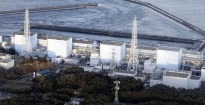Explosion Didn't Damage Reactor
 The Wall Street Journal reports:
The Wall Street Journal reports:
Japanese officials continued their battle to control dangerous reactor overheating in the nation's worst nuclear accident that followed Friday's earthquake, as they resorted to an unprecedented attempt to cool the reactor with seawater.
Top government officials assured the nation Saturday evening that an explosion that took place at one of the reactors at the Tokyo Electric Power Co.'s Fukushima Daiichi nuclear-power plant earlier in the day merely knocked down the walls of its external concrete building, and that the reactor and the containment structure surrounding it remained intact.
"The latest explosion wasn't of a kind that would come with a significant leakage of radiation," Yukio Edano, the chief cabinet secretary, said at a news conference. "It's our expectation that we can bring this nuclear-power plant under control, using this unprecedented step of filling the containment structure with seawater." Boric acid will also be added to the salt water to fight a possible elevation in nuclear reaction, Mr. Edano said.
The building housing the stricken reactor collapsed Saturday afternoon with smoke billowing out, and officials responded by expanding the evacuation perimeter to a 12-mile radius and saying they were preparing to stockpile iodine supplies "just in case."
Soon after the explosion, the radiation level outside the reactor became elevated to 1,015 microsievert—the equivalent of being exposed to the maximum allowable level for a full year in a single day. The level has since come down sharply. The explosion was caused by hydrogen leaking inside the containment structure from the reactor experiencing high vapor pressure, Mr. Edano said.
Click here to read more.

